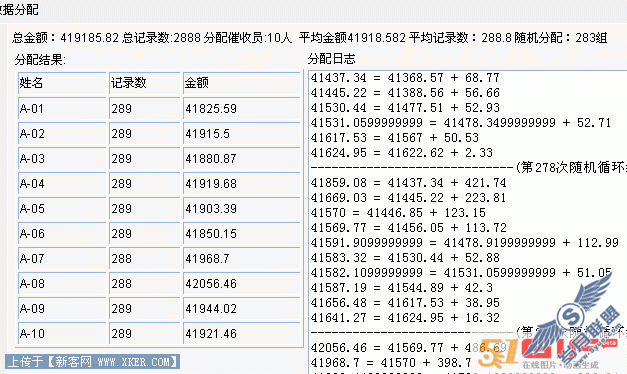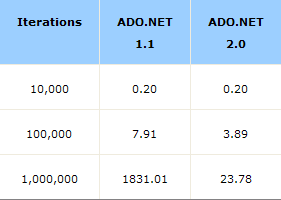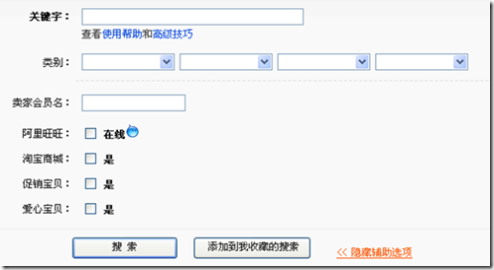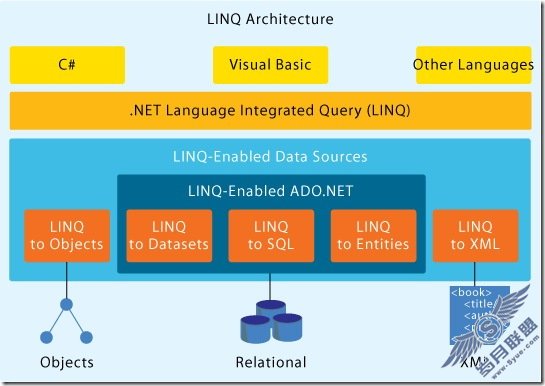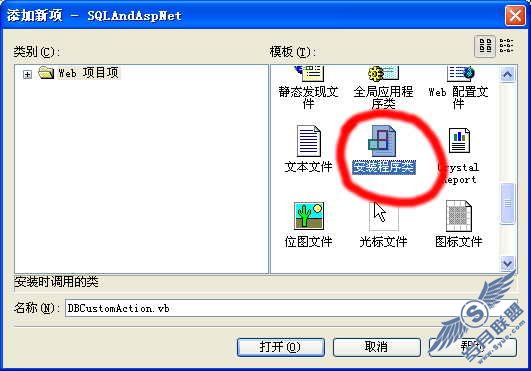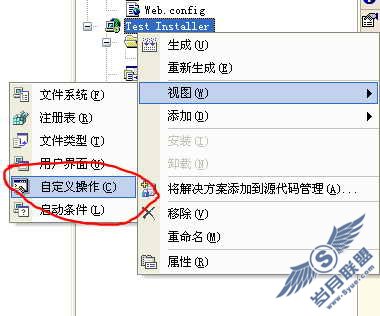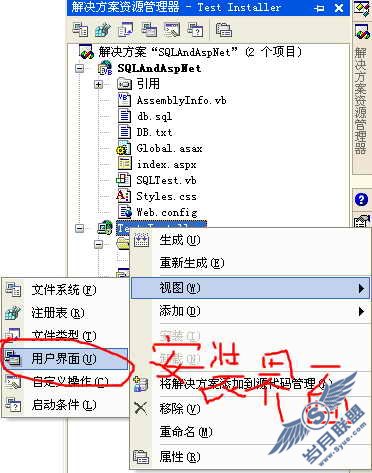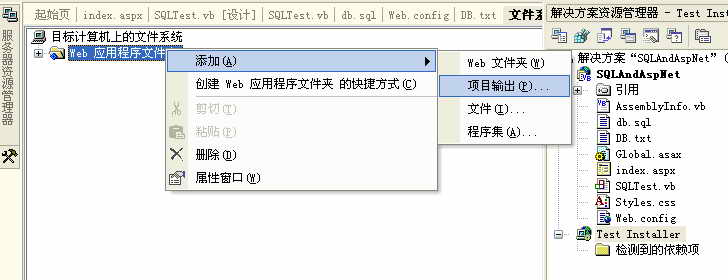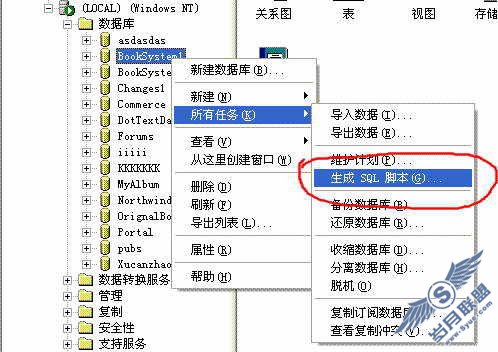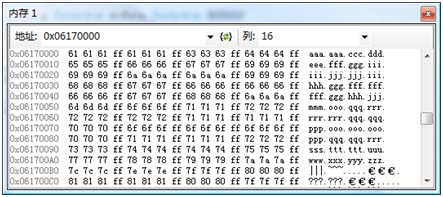.NET基础篇——Entity Framework数据转换层通用类
在实现基础的三层开发的时候,大家时常会在数据层对每个实体进行CRUD的操作,其中存在相当多的重复代码。为了减少重复代码的出现,通常都会定义一个共用类,实现相似的操作,下面为大家介绍一下Entity Framework时常用到的通用类。
首先在数据库建立起几个关联表:Person、Company、Position,三个实体之间通过导航属性进行相互引用。
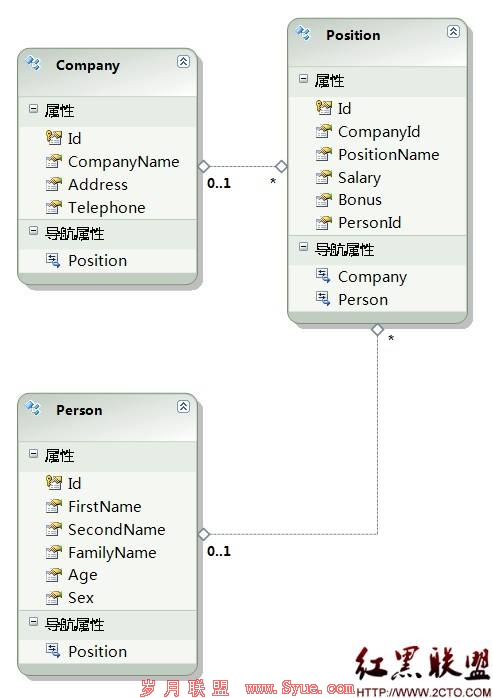
下面为大家分别介绍以泛型实现的 Create、Read、Update、Delete 操作:
1. Create
在ObjectContext类之中,早已经为大家预定了一个Create 的操作 AddObject:
void ObjectContext.AddObject(entitySetName string,object entity)
void ObjectSet<T>.AddObject(T entity)
1 public int Add<T>(T entity) where T : EntityObject
2 {
3 int changedCount = 0;
4 using (TransactionScope scope = new TransactionScope(TransactionScopeOption.Required))
5 {
6 try
7 {
8 using (BasicArchitectureEntities context = new BasicArchitectureEntities())
9 {
10 context.AddObject(typeof(T).Name, entity);
11 changedCount = context.SaveChanges();
12 if (changedCount > 0)
13 context.AcceptAllChanges();
14 scope.Complete();
15 }
16 }
17 catch (Exception ex)
18 { ........ }
19 }
20 return changedCount;
21 }
从下面的测试可以看到,ObjectContext.AddObject(entitySetName string,object entity)已相当成熟,它不但可以加入单个实体,也可通过导航属性,一次性加入多个关联实体。
1 static void Main(string[] args)
2 {
3 BaseCommand command = new BaseCommand();
4 //建立关联实体
5 Company company = new Company() { CompanyName = "Sun" ,Address="Beijing",Telephone="010-87654321"};
6 Position position = new Position() { PositionName = "Project Manager", Salary = 15000.00, Company = company };
7 //通过Add<T>同时加入实体对象company与position
8 int n=command.Add<Position>(position);
9
10 Console.ReadKey();
11 }
若要使用批量插入,只要在AddObject方法前多加一个重复语言即可,在此就不再多作解释了。
1 public int AddList<T>(List<T> entityList) where T : EntityObject
2 {
3 int changedCount = 0;
4 using (TransactionScope scope = new TransactionScope(TransactionScopeOption.Required))
5 {
6 try
7 {
8 using (BasicArchitectureEntities context = new BasicArchitectureEntities())
9 {
10 foreach (T entity in entityList)
11 context.AddObject(typeof(T).Name, entity);
12 changedCount = context.SaveChanges();
13 if (changedCount > 0)
14 context.AcceptAllChanges();
15 scope.Complete();
16 }
17 }
18 catch (Exception ex)
19 { ....... }
20 }
21 return changedCount;
22 }
2. Delete
同样地,ObjectContext 类当中也存在方法 ObjectContext.DeleteObject(object entity)用于删除实体。
首先通过输入的参数 id 建立起EntityKey对象,然后在ObjectContext查找此实体,若实体存在则使用ObjectContext.DeleteObject(object entity)方法把此实体删除 。
1 public int Delete<T>(int id) where T : EntityObject
2 {
3 int changedCount = 0;
4 using (TransactionScope scope = new TransactionScope(TransactionScopeOption.Required))
5 {
6 try
7 {
8 using (BasicArchitectureEntities context = new BasicArchitectureEntities())
9 {
10 //建立EntityKey对象
11 EntityKey entityKey = new EntityKey("BasicArchitectureEntities." + typeof(T).Name, "Id", id);
12 //通过EntityKey找到实体
13 var objResult = context.GetObjectByKey(entityKey);
14 //若实体存在则删除实体
15 if (objResult != null)
16 context.DeleteObject(objResult);
17 changedCount = context.SaveChanges();
18 if (changedCount > 0)
19 context.AcceptAllChanges();
20
21 scope.Complete();
22 }
23 }
24 catch (Exception ex)
25 { ...... }
26 }
27 return changedCount;
28 }
ObjectContext.DeleteObject(object entity)与ObjectContext.AddObject(entitySetName string,object entity)相同,可以通过导航属性,一次性删除多个关联实体。但如果数据库中存在下面的数据
Company表:

Position表:

此时使用此 int Delete<Company>(2) 方法删除Company对象,系统将会报错。这是由于导航属性在默认情况下具有延时加载的特性,在系统使用ObjectContext.GetObjectByKey(entityKey)方法加载实体时,它的导航属性不会马上加载到上下文当中。而是在调用该导航属性时,对象才会被加载。
因而系统通过ObjectContext.GetObjectByKey(2)获取Company对象时,对应的Position对象并未被加载到上下文当中,所以当删除Company对象时,Position对象不能被同步删除,因而造成逻辑上的错误。为解决这一问题,可以利用RelatedEnd.Load()方法提前加载导航属性。
RelatedEnd是EntityCollection<TEntity> 、EntityReference的父类,它们是特定实体类型的对象集合,该实体类型表示一对多、多对一、多对多的关系。而RelatedEnd.Load()方法,可以将一个或多个相关对象提前加载到相关实体当中。
首先通过ObjectContext.GetObjectByKey(entityKey)方法找到Company对象,然后利用反射属性PropertyInfo类获取导航属性Position,最后使用RelatedEnd.Load()方法,把导航属性加载到当前上下文中。此时使用Delete<Company,Position>(2)方法删除Company对象时,系统将能正常运行,并把对应的Position对象一并删除。
1 public int Delete<PKEntity, FKEntity>(int id)
2 where PKEntity : EntityObject
3 where FKEntity : EntityObject
4 {
5 int changedCount = 0;
6 using (TransactionScope scope = new TransactionScope(TransactionScopeOption.Required))
7 {
8 try
9 {
10 using (BasicArchitectureEntities context = new BasicArchitectureEntities())
11 {
12 //根据软件Id建立EntityKey对象
13 EntityKey entityKey = new EntityKey("BasicArchitectureEntities." + typeof(PKEntity).Name, "Id", id);
14 //根据EntityKey查找对应对象
15 PKEntity objResult = context.GetObjectByKey(entityKey) as PKEntity;
16 //根据FKEntity加载导航属性
17 PropertyInfo propertyInfo = typeof(PKEntity).GetProperty(typeof(FKEntity).Name);
18 EntityCollection<FKEntity> FKEntityList = propertyInfo.GetValue(objResult, null)
19 as EntityCollection<FKEntity>;
20
21 if (FKEntityList != null)
22 FKEntityList.Load();
23
24 if (objResult != null)
25 context.DeleteObject(objResult);
26 changedCount = context.SaveChanges();
27
28 if (changedCount > 0)
29 context.AcceptAllChanges();
30
31 scope.Complete();
32 }
33 }
34 catch (Exception ex)
35 { ........ }
36 }
37 return changedCount;
38 }
通过下面的方法也可根据输入的委托predicate,批量删除有关的数据。
1 public int Delete<T>(Func<T,bool> predicate) where T: EntityObject
2 {
3 int changedCount = 0;
4 using (TransactionScope scope = new TransactionScope(TransactionScopeOption.Required))
5 {
6 try
7 {
8 using (BasicArchitectureEntities context = new BasicArchitectureEntities())
9 {
10 //根据输入的委托查找数据
11 var list = context.CreateObjectSet<T>().Where(predicate);
12 //若存在数据,删除有关数据
13 if (list.Count() > 0)
14 foreach (var obj in list)
15 context.DeleteObject(obj);
16
17 changedCount = context.SaveChanges();
18 if (changedCount > 0)
19 context.AcceptAllChanges();
20
21 scope.Complete();
22 }
23 }
24 catch (Exception ex)
25 { ...... }
26 }
27 return changedCount;
28 }
与前面的例子相同,当使用 Delete<Company>(x=>x.Id==2) 方法删除 Company 对象时,由于导航属性 Position 处于延迟加载的状态,以致系统无法实现同步删除,从而令数据出现逻辑性的错误。
此时使用类似的方法,利用 RelatedEnd.Load() 把导航属性提前加入到上下文中,再删除Company对象时,系统就可以把对应 Position 对象一并删除。
1 public int Delete<PKEntity, FKEntity>(Func<PKEntity,bool> predicate)
2 where PKEntity : EntityObject
3 where FKEntity : EntityObject
4 {
5 int changedCount = 0;
6 using (TransactionScope scope = new TransactionScope(TransactionScopeOption.Required))
7 {
8 try
9 {
10 using (BasicArchitectureEntities context = new BasicArchitectureEntities())
11 {
12 //根据输入的委托查找数据
13 var list = context.CreateObjectSet<PKEntity>().Where(predicate);
14 //若数目大于0,删除有关数据
15 if (list.Count() > 0)
16 {
17 foreach (var obj in list)
18 {
19 //在删除前加载其导航属性
20 PropertyInfo propertyInfo = typeof(PKEntity).GetProperty(typeof(FKEntity).Name);
21 EntityCollection<FKEntity> FKEntityList = propertyInfo.GetValue(obj, null)
22 as EntityCollection<FKEntity>;
23 if (FKEntityList.Count > 0)
24 FKEntityList.Load();
25
26 context.DeleteObject(obj);
27 }
28 }
29
30 changedCount = context.SaveChanges();
31
32 if (changedCount > 0)
33 context.AcceptAllChanges();
34
35 scope.Complete();
36 }
37 }
38 catch (Exception ex)
39 { ....... }
40 }
41 return changedCount;
42 }
此时使用Delete<Company,Position>(x=>x.Id==2),这样就可以把Company对象和相关的Position对象同时删除。
3. Update
ObjectContext 中存在方法 ObjectContext.ApplyCurrentValues<TEntity> 和 ObjectContext.ApplyOriginalValues<TEntity>,用于把将标量值从实体复制到 ObjectContext 中具有相同主键的对象集中。
注意:在调用此方法前必须把实体预先加载到当前上下文当中,要不然系统将会显示 “objectstatemanager 无法跟踪具有相同键的多个对象” 的错误。
由于DAL层的对象大部分使用单体模式进行开发,而BaseCommand是一个共用对象,在共同操作时,Create、Delete、Read 等操作一般不会对实体造成逻辑性的影响。但如果有多个实体同时调用 Update 操作,就有可能对实体造成逻辑性影响。为了避免这一事件的发生,此处使用方法锁定的模式,以 lock(object) 锁定某一对象,以确保在同一时间内只会对一个实体进行更新。
首先通过反射方式获取对象的Id,然后通过 ObjectContext.GetObjectByKey(entityKey) 方法把实体加载到当前上下文当中,最后利用 ObjectContext.ApplyCurrentValues<TEntity> 方法,把新加入的实体的属性复制当前上下文。
1 public class BaseCommand
2 {
3 private object o = new object();
4
5 public int Update<T>(T entity) where T : EntityObject
6 {
7 lock (o)
8 {
9 int changedCount = 0;
10 Type type = typeof(T);
11
12 using (TransactionScope scope = new TransactionScope(TransactionScopeOption.Required))
13 {
14 try
15 {
16 using (BasicArchitectureEntities context = new BasicArchitectureEntities())
17 {
18 //获取实体的Id属性
19 PropertyInfo property = type.GetProperty("Id");
20 object id = property.GetValue(entity, null);
21 //根据Id获取上下文中的对应实体
22 EntityKey entityKey = new EntityKey("BasicArchitectureEntities."
23 + type.Name, "Id", id);
24 var objResult = context.GetObjectByKey(entityKey);
25 //更新实体属性
26 if (objResult != null)
27 context.ApplyCurrentValues<T>(type.Name, entity);
28
29 changedCount = context.SaveChanges();
30 if (changedCount > 0)
31 context.AcceptAllChanges();
32
33 scope.Complete();
34 }
35 }
36 catch (Exception ex)
37 { ... }
38 }
39 return changedCount;
40 }
41 }
42 }
在一对多,多对一关系时,也可以使用以下方法进行导航属性的同步更新。首先通过反射获取主实体的主键Id,然后建立EntityKey对象,再通过ObjectContext.GetObjectByKey(entityKey)方法在当前上下文当中获取此实体,最后通过 ObjectContext.ApplyCurrentValues<TEntity> 方法,把新加入的实体的属性复制当前上下文。
下一步就是对导航属性进行更新,首先通过反射获取外键属性,然后对一对多,多对一的关系进行分别处理。在一对多关系时,把导航属性转换成EntityCollection<T2>对象集合,然后通过 ObjectContext.ApplyCurrentValues<TEntity> 方法对集合中的每个对象进行逐个更新。
在多对一关系时,直接把导航属性转换成T2类型的对象进行更新。
1 public int Update<T1, T2>(T1 entity)
2 where T1 : EntityObject
3 where T2 : EntityObject
4 {
5 lock (o)
6 {
7 int changedCount = 0;
8 Type typeT1 = typeof(T1);
9 Type typeT2 = typeof(T2);
10
11 using (TransactionScope scope = new TransactionScope(TransactionScopeOption.Required))
12 {
13 try
14 {
15 using (BasicArchitectureEntities context = new BasicArchitectureEntities())
16 {
17 PropertyInfo property = typeT1.GetProperty("Id");
18 object id = property.GetValue(entity, null);
19
20 //根据软件Id建立EntityKey对象 www.2cto.com
21 EntityKey entityKey = new EntityKey("BasicArchitectureEntities."
22 + typeT1.Name, "Id", id);
23 //根据EntityKey查找对应对象
24 T1 objT1 = context.GetObjectByKey(entityKey) as T1;
25 //在上下文中更新当前对象
26 if (objT1 != null)
27 context.ApplyCurrentValues<T1>(typeT1.Name, entity);
28
29 //获取外键属性
30 PropertyInfo propertyInfo = typeT1.GetProperty(typeT2.Name);
31
32 //在一对多关键时更新导航属性
33 var T2List = propertyInfo.GetValue(entity, null)
34 as EntityCollection<T2>;
35 if (T2List != null)
36 {
37 foreach (var obj in T2List.ToList())
38 {
39 var oldEntity = context.GetObjectByKey(obj.EntityKey);
40 if (oldEntity != null)
41 context.ApplyCurrentValues<T2>(typeT2.Name, obj);
42 }
43 }
44
45 //在多对一,一对一关系时更新导航属性
46 var objT2 = propertyInfo.GetValue(entity, null) as T2;
47 if (objT2!= null)
48 {
49 var oldEntity = context.GetObjectByKey(objT2.EntityKey);
50 if (oldEntity != null)
51 context.ApplyCurrentValues<T2>(typeT2.Name, objT2);
52 }
53
54 changedCount = context.SaveChanges();
55 if (changedCount > 0)
56 context.AcceptAllChanges();
57
58 scope.Complete();
59 }
60 }
61 catch (Exception ex)
62 { ...... }
63 }
64 return changedCount;
65 }
66 }
通过此方法,无论你要通过Company同步更新Position,还是反过来通过Position同步更新Company,系统也能正常运行。
4. Read
Read 是CRUD中最常见的,下面就为大家介绍最通用的几种方法
4.1 通过Id获取单个实体
1 public T GetObject<T>(int id) where T : EntityObject
2 {
3 try
4 {
5 using (BasicArchitectureEntities context = new BasicArchitectureEntities())
6 {
7 EntityKey entityKey = new EntityKey("BasicArchitectureEntities."
8 + typeof(T).Name, "Id", id);
9 var objResult = context.GetObjectByKey(entityKey);
10 return objResult as T;
11 }
12 }
13 catch (Exception ex)
14 {
15 return null;
16 }
17 }
4.2 通过输入的Func<T,bool>委托获取对象
1 public T GetObject<T>(Func<T,bool> predicate) where T : EntityObject
2 {
3 try
4 {
5 using (BasicArchitectureEntities context = new BasicArchitectureEntities())
6 {
7 var objectSet = context.CreateObjectSet<T>().Where(predicate);
8 if (objectSet.Count() > 0)
9 return objectSet.First();
10 else
11 return null;
12 }
13 }
14 catch (Exception ex)
15 {
16 return null;
17 }
18 }
4.3通过输入的Func<T,bool>委托获取对象,并同时加载单个导航属性
1 public T GetObject<T>(Func<T, bool> predicate,string includePath)
2 where T : EntityObject
3 {
4 try
5 {
6 using (BasicArchitectureEntities context = new BasicArchitectureEntities())
7 {
8 var objectQuery = context.CreateObjectSet<T>()
9 .Include(includePath)
10 .Where(predicate);
11
12 if (objectQuery.Count() > 0)
13 return objectQuery.First();
14 else
15 return null;
16 }
17 }
18 catch (Exception ex)
19 {
20 return null;
21 }
22 }
4.4通过输入的Func<T,bool>委托获取对象,并同时加载多个导航属性
1 public T GetObject<T>(Func<T, bool> predicate, string[] includePath)
2 where T : EntityObject
3 {
4 try
5 {
6 using (BasicArchitectureEntities context = new BasicArchitectureEntities())
7 {
8 var list = context.CreateObjectSet<T>().Where("1==1");
9
10 foreach (var path in includePath)
11 list=list.Include(path);
12
13 var returnValue = list.Where(predicate).ToList();
14
15 if (returnValue.Count() > 0)
16 return returnValue.First();
17 else
18 return null;
19 }
20 }
21 catch (Exception ex)
22 {
23 return null;
24 }
25 }
4.5 通过输入的Func<T,bool>委托获取对象集合
1 public IList<T> GetList<T>(Func<T,bool> func) where T:EntityObject
2 {
3 try
4 {
5 using (BasicArchitectureEntities context = new BasicArchitectureEntities())
6 {
7 ObjectSet<T> objectSet = context.CreateObjectSet<T>();
8 IList<T> list = objectSet.Where(func).ToList();
9 return list;
10 }
11 }
12 catch (Exception ex)
13 {
14 return null;
15 }
16 }
4.6通过输入的Func<T,bool>委托获取对象集合,并同时加入单个导航属性
1 public IList<T> GetList<T>(Func<T, bool> func,string includePath)
2 where T : EntityObject
3 {
4 try
5 {
6 using (BasicArchitectureEntities context = new BasicArchitectureEntities())
7 {
8 ObjectSet<T> objectSet = context.CreateObjectSet<T>();
9 IList<T> list = objectSet.Include(includePath).Where(func).ToList();
10 return list;
11 }
12 }
13 catch (Exception ex)
14 {
15 return null;
16 }
17 }
4.7通过输入的Func<T,bool>委托获取对象集合,并同时加入多个导航属性
1 public IList<T> GetList<T>(Func<T, bool> func, string[] includePath)
2 where T : EntityObject
3 {
4 try
5 {
6 using (BasicArchitectureEntities context = new BasicArchitectureEntities())
7 {
8 var list = context.CreateObjectSet<T>().Where("1==1");
9 foreach (var path in includePath)
10 list = list.Include(path);
11 return list.Where(func).ToList();
12 }
13 }
14 catch (Exception ex)
15 {
16 return null;
17 }
18 }
4.8 通过原始的SqlCommandText获取对象集
1 public IList<T> GetList<T>(string commandText)
2 {
3 try
4 {
5 using (BasicArchitectureEntities context = new BasicArchitectureEntities())
6 {
7 IList<T> list = context.ExecuteStoreQuery<T>(commandText).ToList();
8 return list;
9 }
10 }
11 catch (Exception ex)
12 {
13 return null;
14 }
15 }
只能完成这一个DAL层的通用类以后,您就可在CompanyDAL、PersonDAL、PositionDAL ...... 等多个类中调用这个通用类,轻松地完成各项CRUD的操作。
1 public class CompanyDAL:ICompanyDAL
2 {
3 private BaseCommand command = new BaseCommand();
4
5 public int AddCompany(Company company)
6 {
7 return command.Add<Company>(company);
8 }
9
10 public int DeleteCompany(int id)
11 {
12 return command.Delete<Company>(id);
13 }
14
15 public int UpdateComapny(Company company)
16 {
17 return command.Update<Company>(company);
18 }
19 .............
20 }
相比起以往的SqlCommand操作,Entity Framework更体现出映射的灵活性。以往的操作中,即使开发出一个通用类,CommandText 通常都需要使用手工输入,特别是重复的Update命令操作中,往往令人不厌其烦。通过Entity Framework可以把CRUD更高度地集中在一个通用类,令开发变得更加简单。
希望本篇文章对您的系统开发有所帮助。
作者:风尘浪子
